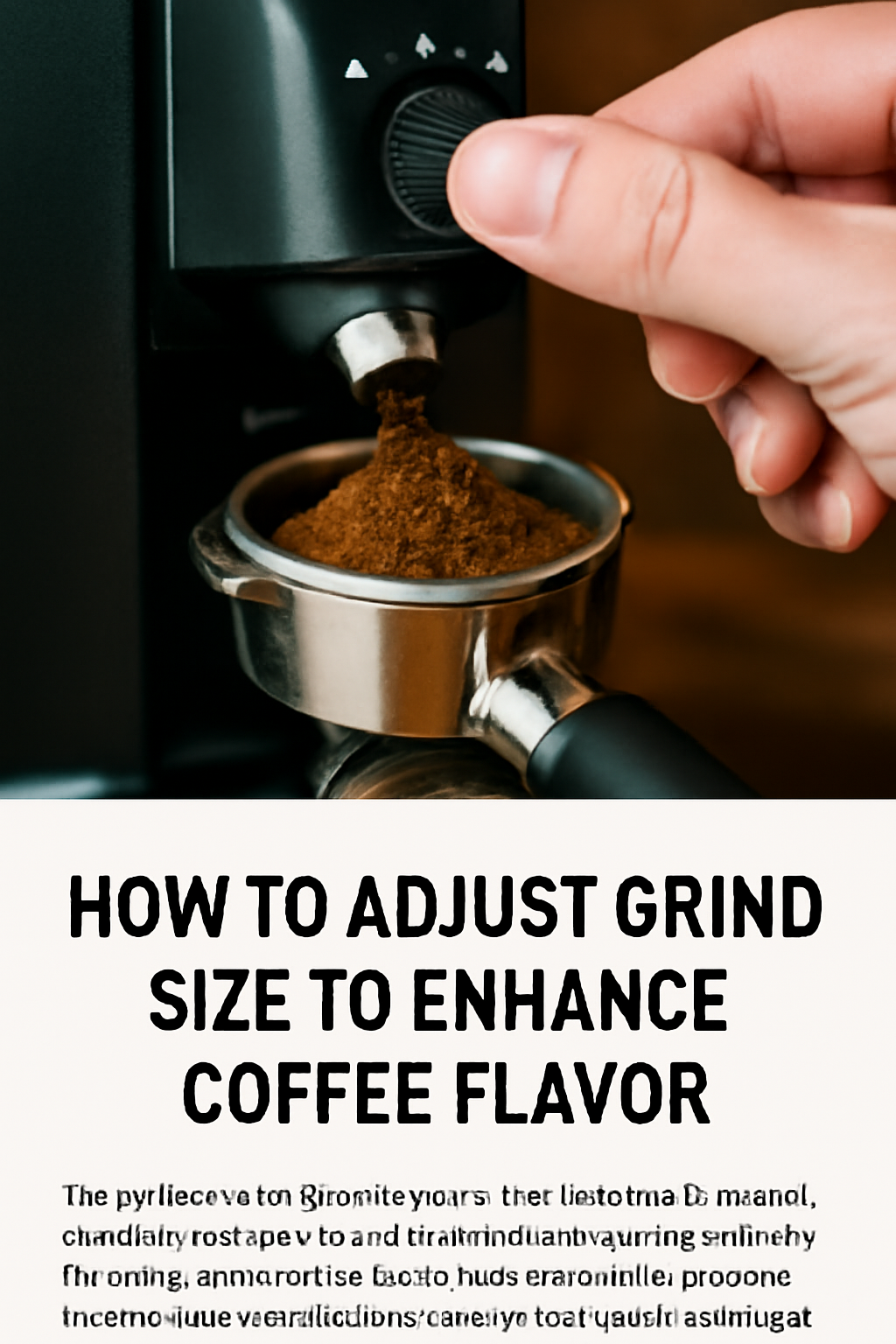The grind size of your coffee beans is one of the most influential factors in brewing a flavorful cup. Adjusting the grind size can dramatically change the taste, aroma, and body of your coffee, whether you’re brewing espresso, drip coffee, or using a French press. Understanding how grind size affects extraction and learning to tweak it properly can elevate your coffee experience. In this article, we’ll explore the science behind grind size, how to adjust it for different brewing methods, and tips to enhance your coffee flavor.
The Relationship Between Grind Size and Extraction
Extraction is the process of dissolving desirable compounds from coffee grounds into water. These compounds include acids, sugars, oils, and bitter elements that create coffee’s complex flavor profile. Grind size controls the surface area exposed to water, affecting the speed and completeness of extraction.
- Fine grind: More surface area allows water to extract flavors quickly.
- Coarse grind: Less surface area slows extraction, resulting in a different flavor balance.
If your grind size is too fine for the brewing method, over-extraction can occur, leading to bitterness and harsh flavors. Conversely, too coarse a grind can cause under-extraction, resulting in sour, weak, or watery coffee.
How to Identify Extraction Issues by Taste
Signs of Under-Extraction
- Sour, acidic, or fruity flavors dominate.
- Thin body with weak aroma.
- Lacking sweetness and balance.
Signs of Over-Extraction
- Bitter or burnt flavors.
- Dry, chalky mouthfeel.
- Harsh or astringent aftertaste.
Correcting these issues often involves adjusting grind size along with other variables like brewing time and water temperature.
Adjusting Grind Size for Different Brewing Methods
Espresso
Espresso requires a fine grind to create resistance for the high-pressure extraction process, typically between 18-20 grams of coffee per shot. If your espresso tastes sour or watery, try grinding finer to increase extraction. If it tastes bitter or burnt, grind coarser to reduce extraction time.
Drip Coffee
Drip coffee makers and pour-over methods use a medium grind. If your coffee tastes weak or sour, adjust to a finer grind; if it tastes bitter or overly strong, adjust coarser. Because brew times vary, minor grind adjustments can have significant effects.
French Press
French press coffee requires a coarse grind to prevent sediment passing through the metal mesh filter. If your coffee is too weak or sour, grind finer; if it’s bitter or over-extracted, grind coarser. Coarser grinds produce a fuller-bodied cup with less sediment.
Cold Brew
Cold brew demands an extra coarse grind to allow for long steeping times (12-24 hours) without over-extraction. If your cold brew tastes bitter or harsh, try a coarser grind; if weak or sour, slightly finer.
Tools for Grinding Coffee
- Burr Grinders: Provide consistent particle size and adjustable settings. Preferred for all brewing methods.
- Blade Grinders: Less consistent and can lead to uneven extraction. Not recommended for specialty coffee.
- Manual vs. Electric: Manual grinders offer precision but require effort; electric grinders are faster but vary in quality.
Regular calibration and cleaning of your grinder are essential for maintaining consistent grind size.
Step-by-Step Guide to Adjusting Grind Size
- Assess Your Current Coffee Taste: Identify if your coffee is over-extracted or under-extracted by tasting.
- Make Small Adjustments: Change grind size in small increments; large jumps can overshoot the ideal extraction.
- Brew and Taste Again: Test the coffee with the new grind size to evaluate improvement.
- Record Your Settings: Keep notes on grind size, brewing time, and taste to track progress.
- Repeat as Needed: Continue adjusting until you achieve balanced, flavorful coffee.
Additional Factors Affecting Flavor
While grind size is crucial, other factors influence extraction:
- Water Temperature: Ideal range is 90-96°C (194-205°F).
- Brew Time: Longer brew times increase extraction.
- Coffee-to-Water Ratio: Impacts strength and flavor.
- Freshness of Beans: Freshly roasted beans provide better flavor and crema.
Balancing these variables alongside grind size fine-tunes your coffee.
Common Mistakes to Avoid
- Changing multiple variables simultaneously, making it hard to pinpoint the cause of flavor issues.
- Using an inconsistent grinder or one that doesn’t allow precise adjustments.
- Ignoring water quality or brew temperature.
- Grinding beans too far in advance, leading to stale coffee.
Tips for Enhancing Coffee Flavor Through Grind Adjustment
- Invest in a quality burr grinder with fine adjustment settings.
- Adjust grind size according to bean origin and roast level; darker roasts often require coarser grinds.
- Consider altitude and humidity, as they affect extraction and may require grind tweaks.
- Experiment with brewing time in conjunction with grind size.
- Taste coffee at different points during extraction to understand flavor development.
Conclusion
Mastering grind size adjustment is essential for unlocking your coffee’s full flavor potential. By understanding how grind size affects extraction and knowing how to fine-tune it for your brewing method, you can avoid common taste pitfalls and consistently brew balanced, delicious coffee. Combine this knowledge with fresh beans, proper equipment, and good technique to elevate your daily cup into a true sensory experience.

